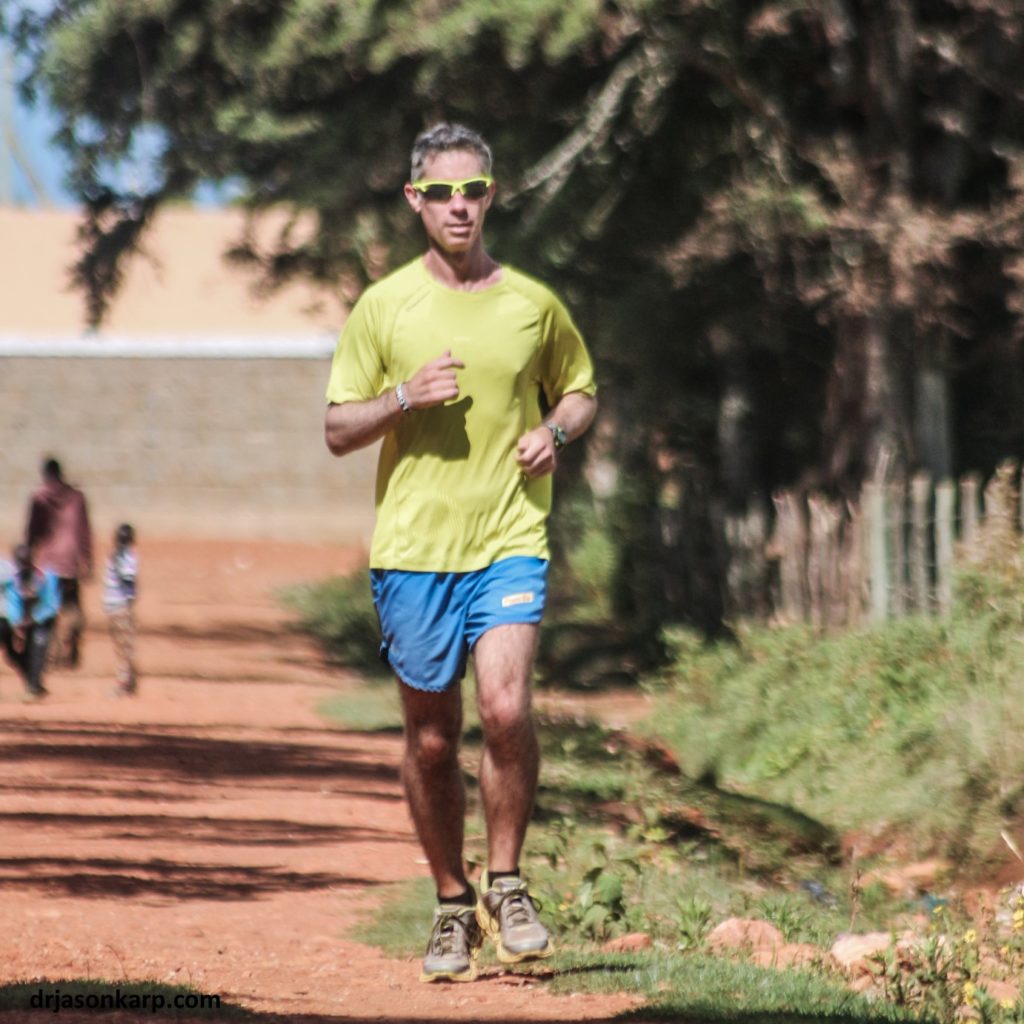Now that I’m living and coaching at 7,900 feet altitude in Kenya, altitude is always on my mind. I work with it every day with the athletes here. I have been interested in altitude training for a long time, and have published several articles and a book chapter on the subject.
When you run at altitude, the same pace feels harder than at sea level because your VO₂max is lower at altitude. (Anaerobic running, however, is faster at altitude because of the less dense air.)
VO₂max decreases by about 2.6% for every 1,000 feet of altitude above 3,400 feet (1,036 meters). To make your workouts physiologically equivalent to your sea-level workouts, here’s how to adjust your pace for altitude workouts:
# of feet at altitude – 3,400 feet = A
(A x 0.026) ÷ 1,000 feet = B
B x sea-level pace in minutes = C
C + sea-level pace in minutes = new altitude pace in minutes
Then, convert the decimal from the new altitude pace into seconds by multiplying the decimal by 60 to get your new altitude pace. For example, at an altitude of 5,000 feet and a sea-level pace of 7:00 per mile (4:21 per km):
5,000 feet – 3,400 feet = 1,600 feet
(1,600 x 0.026) ÷ 1,000 feet = 0.0416
0.0416 x 7.0 minutes = 0.2912
0.2912 + 7.0 minutes = 7.2912 minutes
0.2912 x 60 = 17 seconds = 7:17 per mile pace (4:31/km)
If you live at altitude and travel to sea level, subtract (instead of add) the time from the altitude pace to find the sea-level pace since you’ll be faster at sea level than at altitude.
Since not all runners respond to altitude the same way, slight adjustments may need to be made to running paces based on individual responses to altitude.
